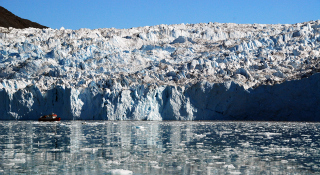| Back to Back Issues Page |
 |
|
Blowin' in the Wind, Issue #090 Frost and Gardens - Jan 1, 2012 December 28, 2011 |
Hello ,Investigating the January Thaw and Explaining why the Phenomenon OccursJanuary thaw statistics have been documented for many years to ensure that people can understand the fluctuations in temperature, and begin to understand why the temperature rises in January. The average winter temperature observed for each locale can vary a vast amount.
What is it?During the mid winter period, we consistently see an anomalous rise in temperature, which can cause regions in certain latitudes to begin to thaw. The increased temperatures experienced temporarily takes the icy edge off the winter weather. We call this unusually warm January weather, which normally happens in the later days of the month, The January Thaw.The period that the temperature rise occurs will typically see an average of 10°F higher than the week before; however, it will drop again by the end of February. And although the common term for this period is the January thaw, many places will not see the ice and snow melt. Nonetheless, people in these areas still feel the difference in temperature and consider it a pleasant break from the chillier temperatures they have been experiencing.
When and Where?The length of the January thaw will vary and can last from a couple of hours to several days depending on the meteorological conditions behind. Although the records prove there is a significant rise in winter temperatures, meteorologists still categorize the January thaw as a singularity. Therefore, the thaw has never been officially recognized; however, people often anticipate it and prepare for its effects.Some countries that experience extreme temperatures remain cold by world standards and may not reach above freezing, even if it does rise. The amount that the winter temperature increases will vary and it may not even happen every year. Many aspects of weather like this one are considered unpredictable from year to year. Winter temperatures typically have the largest variability, and there have been studies focusing on the January thaw. A change in temperature by a few degrees during this period could go unnoticed; however, an extreme change, can lead to incredible effect, alarm and even headlines. The thawing might also not come into place until the temperatures have risen for a significant number of days; therefore, rate of increase and duration of anomaly both need to be considered when labelling an individual event. The daily mean temperatures in winter and throughout the whole year are retrieved from records and used for comparison and analysis of the January thaw. There are areas of the world which have been studied extensively looking for temperature rises causing the most noticeable impacts on human populations. And no matter where you live, you may experience a sudden alternation in the temperatures. However, this rise can give residents false hope that the winter months are drawing to a close. Or fear of an imminent, apocalyptic global warming trend. Relax...it's just the January Thaw. |
| Back to Back Issues Page |
